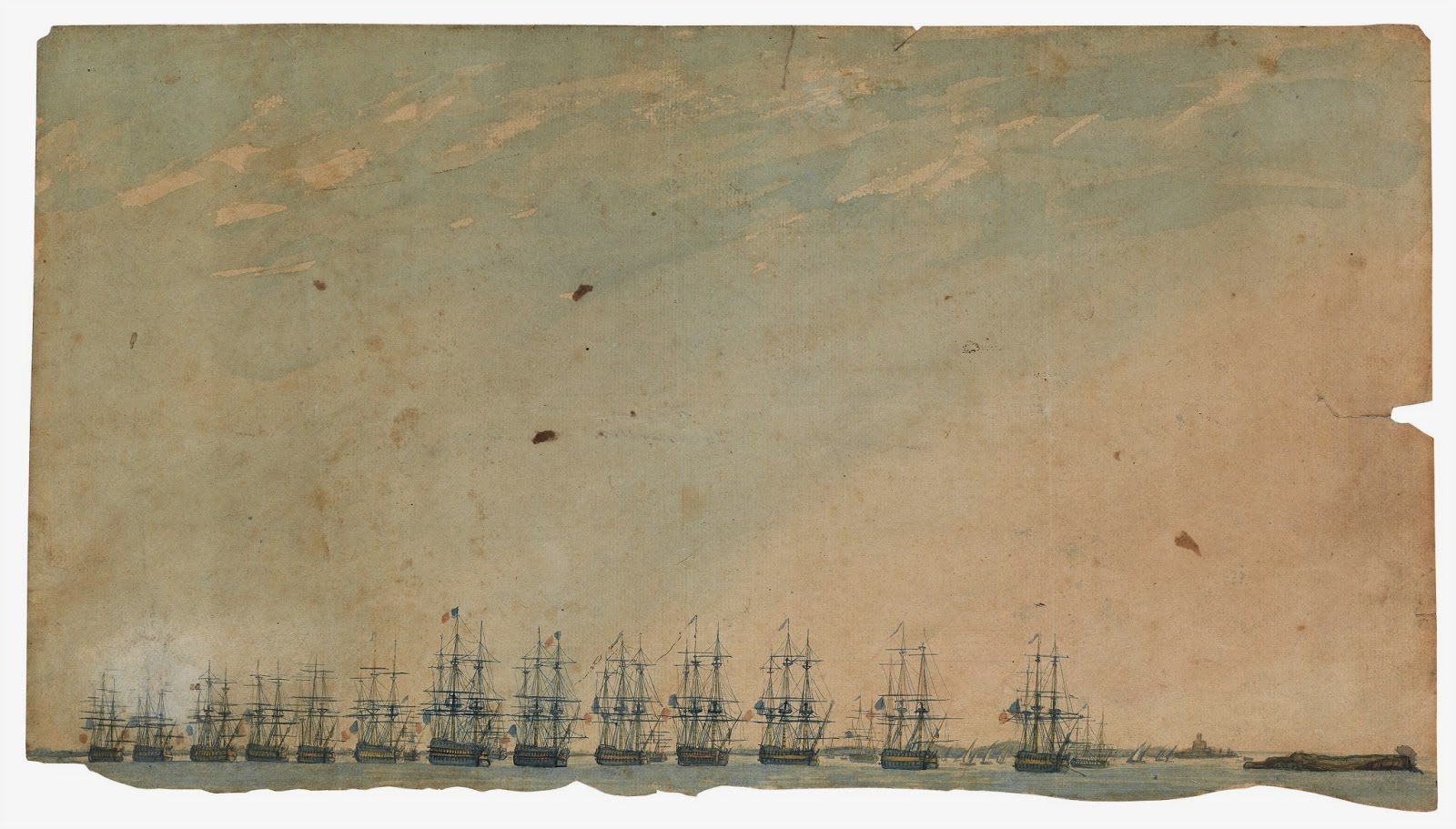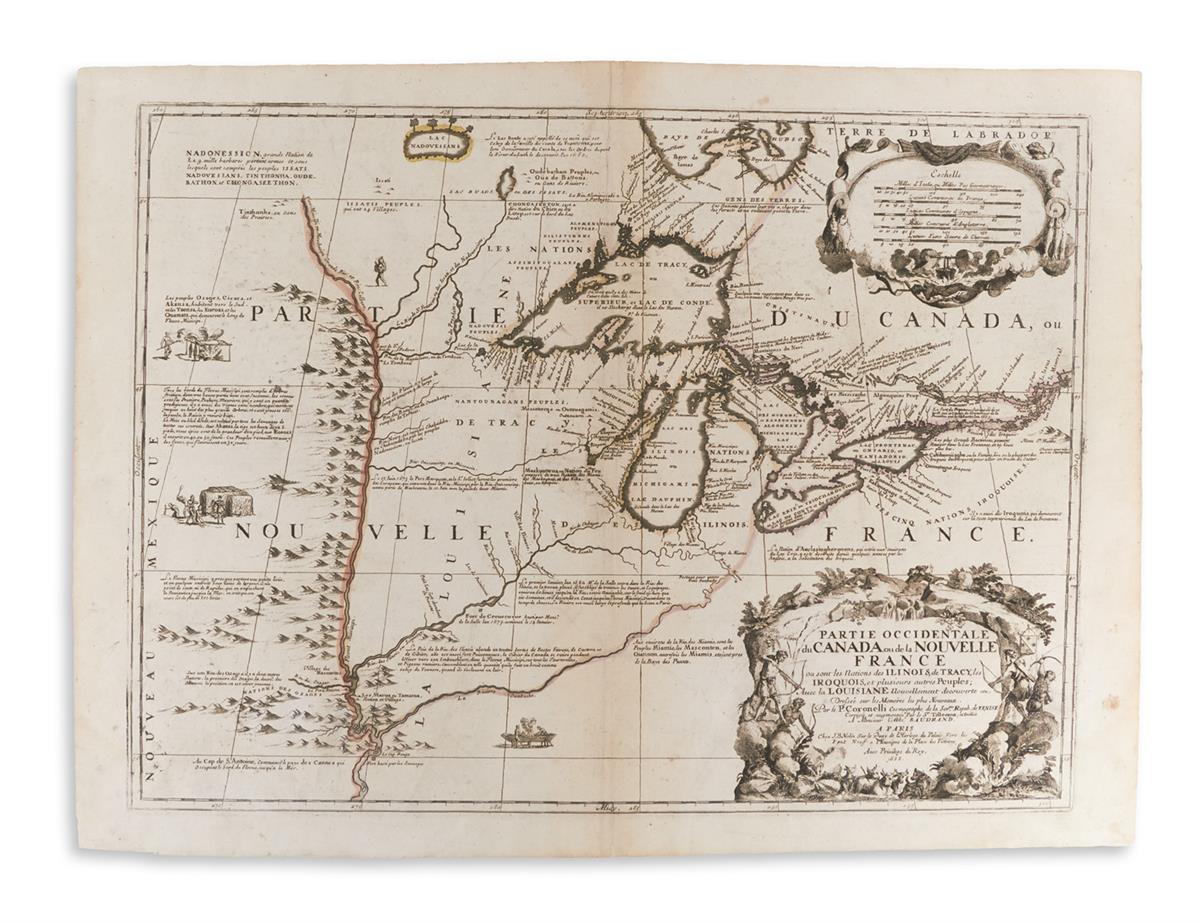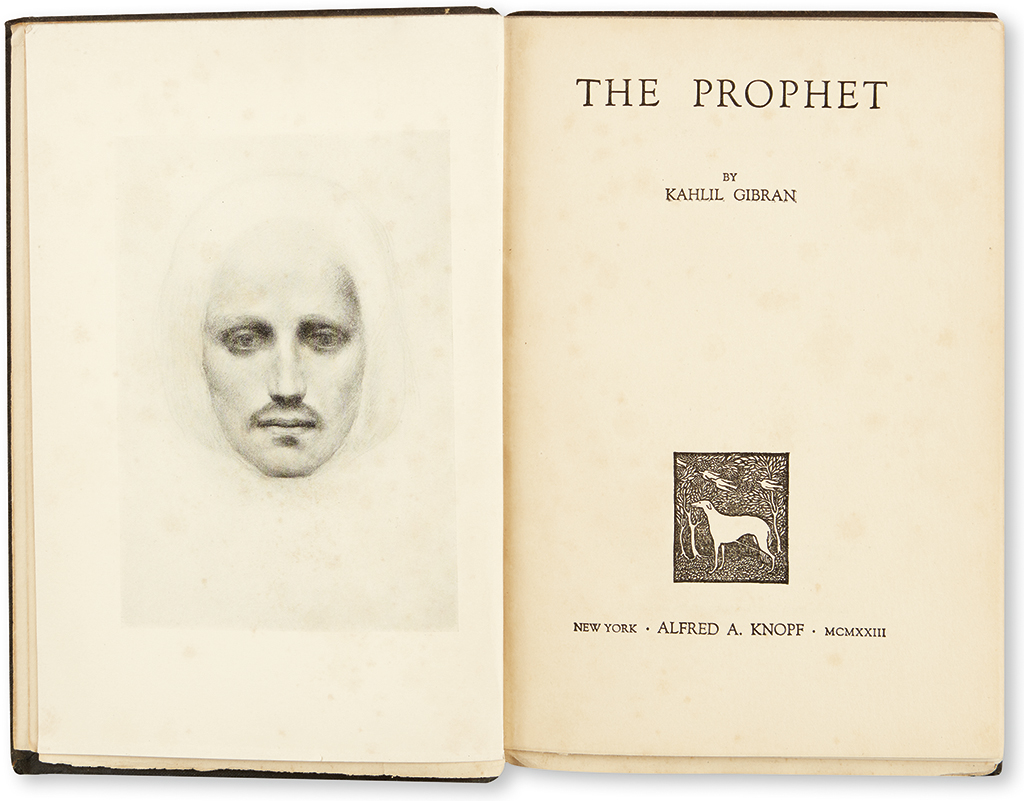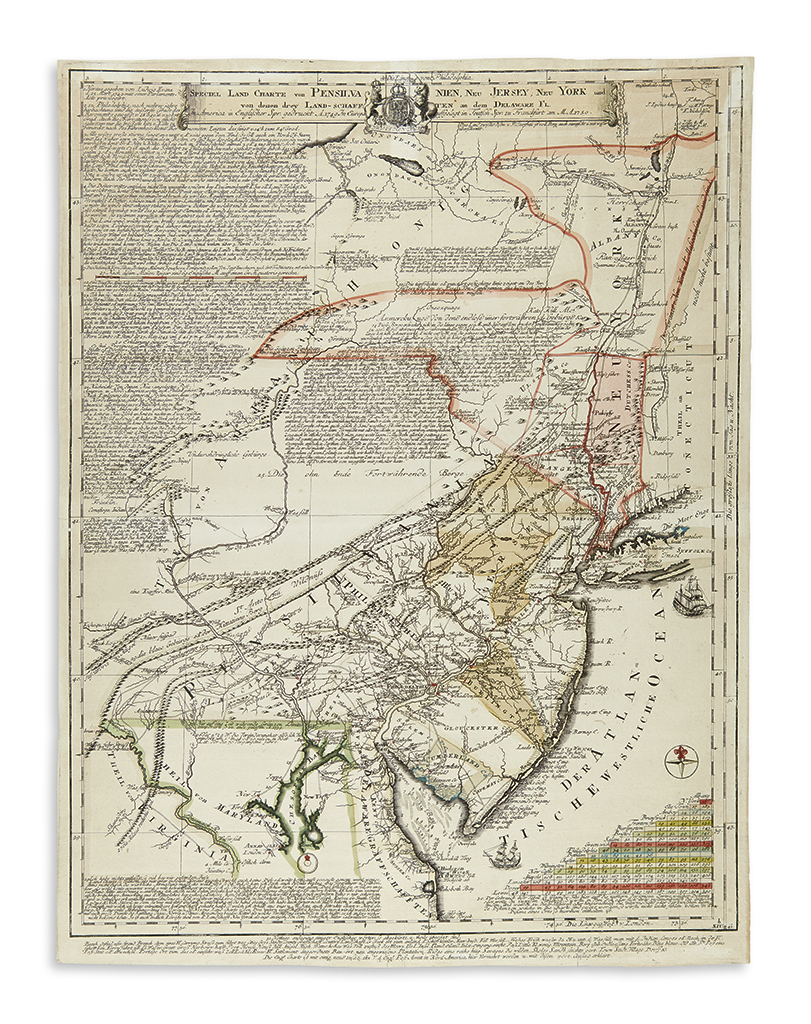Battle of the Nile Sketch: The French Fleet on the Eve of Its Destruction

Swann Galleries’ June 3, 2014 auction of Maps & Atlases, Natural History & Color Plate Books offers an unparalleled sketch from life of the Battle of the Nile attributed to Captain James Weir. The watercolor The French line as they appear’d at an Anchor on the 1st of August 1798. in the Wn. branch of the Nile is a battle scene from the perspective of Admiral Nelson’s squadron as it approached Napoleon’s fleet in Abu Qir Bay on the afternoon of 1 August 1798. On the back are manuscript notes relating the French and British orders of battle and the fates of the French ships of the line.

During the summer of 1798 Nelson chased Napoleon’s marauding fleet across the Mediterranean and finally caught the French just outside Alexandria. As the sun set on the first of August, Nelson attacked them in Abu Qir Bay. His decisiveness proved a stroke of genius as the French were caught in a punishing pincer formation. At 10 o’clock, “L’Orient,” flagship of the French commander Admiral Brueys, was utterly destroyed in a munitions explosion. The rest of the line fell around her, and in the end all but two of the French ships were taken or destroyed. Nelson’s victory launched him to the pinnacle of fame and likewise made a name for his Band of Brothers.
James Weir was a captain in the Royal Marines and was stationed aboard HMS Audacious at the Nile. Weir is thought to be the only artist to sketch from life at the Nile and some of his sketches served as templates for a series of engravings of the battle.
This piece has an interesting provenance: it went from Admiral Sir Frederick Dalrymple-Hamilton (commander of HMS Rodney at the sinking of the Bismark) to his daughter and then to the current owner.















![Grace Meschery-McCormack shares about two copies of Fernando de Rojas’s ‘La Célestine,’ including a limited edition copy illustrated by Pablo Picasso.
At auction April 22. Learn more about the works at the link in our bio.
#Rarebooks #rarebookdealer #antiquarianbooks #auctions
_______________________________________
Music Credit:
Schubert - Piano Quintet in A major ‘The Trout’, D. 667 - IV. Andantino – Allegretto
Music provided by Classical Music Copyright Free on Youtube [https://tinyurl.com/visit-cmcf]
Watch: • Schubert - Piano Quintet in A major ‘...]](https://scontent-iad3-1.cdninstagram.com/v/t51.75761-15/491443494_18499096345036585_5935932878956098058_n.jpg?stp=dst-jpg_e35_tt6&_nc_cat=107&ccb=7-5&_nc_sid=18de74&_nc_ohc=Kjf2AzWLeY8Q7kNvwEQYrfY&_nc_oc=Adn_Uzi4Nwl1nHCsTtuLCIkthuYOWwKedtxovtcdMSYhpbHQGScR7QSzzN2rD0v-khE&_nc_zt=23&_nc_ht=scontent-iad3-1.cdninstagram.com&edm=AM6HXa8EAAAA&_nc_gid=uqaUTU7TNl0fL2fUFM-Rzw&oh=00_AfLr5FzDRrl_EYRG2aj17zTY5TUhadlgDzJHCYGMED7CKw&oe=68237891)


